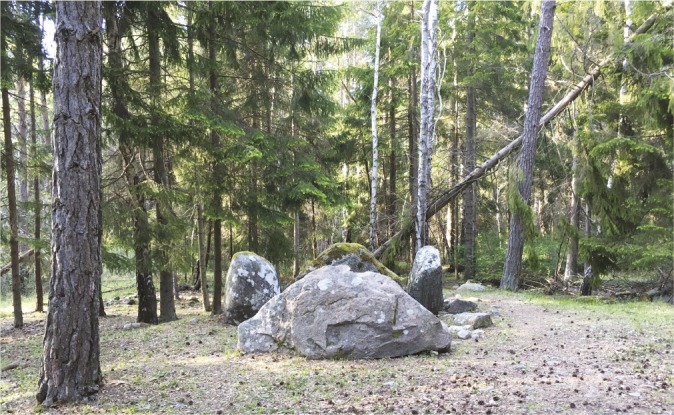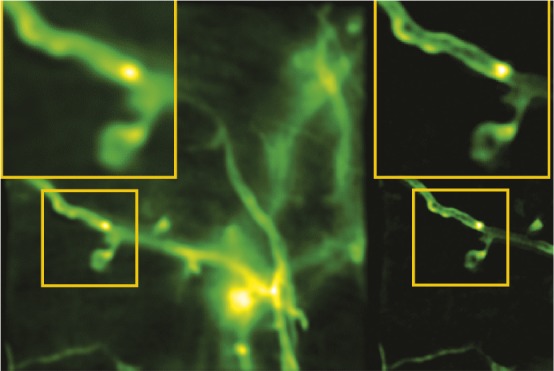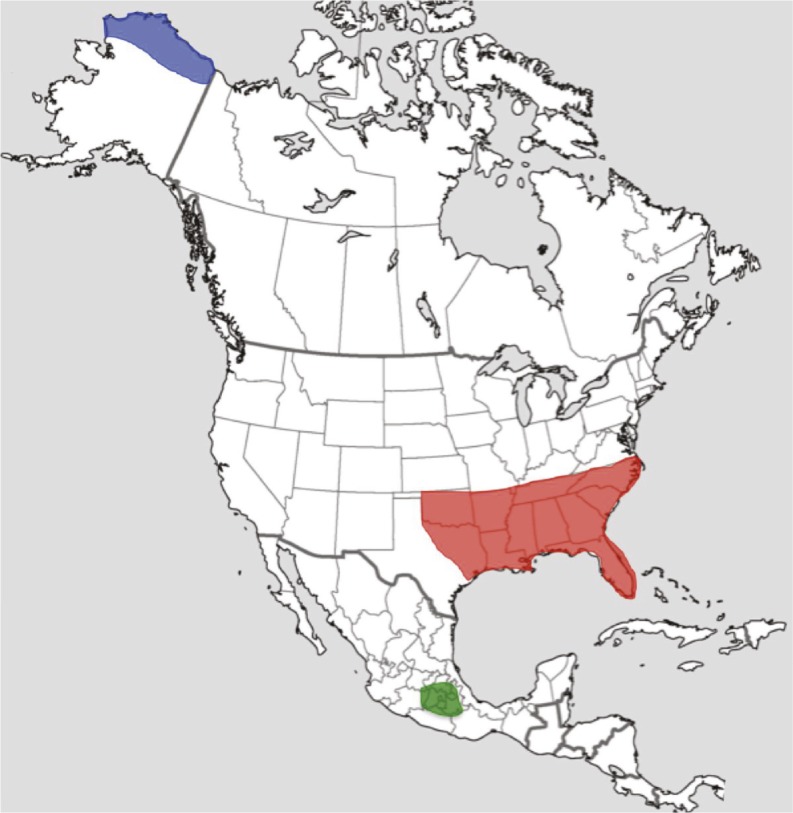Kin relationships in megalithic burial sites

The Ansarve dolmen, Island of Gotland, Sweden.
Megalithic tombs emerged in France around 4500 BCE and spread throughout Europe. However, the cultural origin of such structures and their role in Neolithic societies has been debated. Federico Sánchez-Quinto, Helena Malmström, Magdalena Fraser, et al. (pp. 9469–9474) generated genome sequence data from 24 individuals buried in five megalithic sites in Ireland, Scotland, the Czech Republic, and Sweden. The researchers compared the genomic data to European paleogenomic data and found that the individuals displayed affinity to farming groups that had past admixture with hunter-gatherer groups. In the British Isles, more men than women were identified in megalithic burials, although the same gender disparity was not seen in nonmegalithic burials. Among all sampled sites, the authors identified five kin relationships of first and second degrees in Ireland and one in Sweden, indicating both immediate family members and close extended family members. In Ireland, the kin relationships extended to multiple megaliths. Continuity of paternal genetic characteristics through time, up to 12 generations, suggests that the megaliths were associated with patrilineal family groups. According to the authors, the results suggest previously unknown roles of megalith structures among Neolithic societies and families. — P.G.
Structured illumination microscopy for live brain imaging

In vivo imaging of mouse brain with adaptive optics SIM. Deconvoluted wide-field (Left) and SIM (Right) images of dendrites expressing a green fluorescent membrane label. Scale bar: 5 µm.
Structured illumination microscopy (SIM) is a superresolution imaging technique used to visualize dynamic intracellular processes in living cells at high spatial and temporal resolution using fluorescent dyes. However, SIM imaging of intact living brains remains challenging, partly due to the difficulty of imaging spatially complex and optically heterogeneous soft tissue prone to constant motion. Raphaël Turcotte et al. (pp. 9586–9591) used a method termed adaptive optics as well as a series of steps aimed at optimizing image acquisition and reconstruction to reduce optical aberrations and mitigate the effects of motion during SIM imaging of live mouse and larval zebrafish brains. The approach enabled in vivo imaging of dynamic neuronal processes occurring at dendrites and synapses at nanoscale resolution and at a depth of 50 µm below the dura mater, the brain’s outer membrane, in living mice. Compared with uncorrected images, the use of adaptive optics resulted in aberration-free images of increased brightness and spatial resolution, sharpening dendritic spine heads and affording a crystalline view of spine necks. Additionally, the authors demonstrated the use of in vivo SIM for analysis of neuronal function, visualizing the activity of neurons labeled with the genetically encoded calcium indicator GCaMP6. According to the authors, SIM can be used for high-resolution structural and functional neuronal imaging in living animals. — P.N.
Adaptations of indigenous populations in North America

Sampling regions from across North America.
Researchers have examined natural selection in humans around the world, but little is known about genetic adaptations in the indigenous peoples of North America. Austin Reynolds et al. (pp. 9312–9317) analyzed DNA samples from 35 Alaskan Iñupiat, 47 individuals from central Mexico, and 68 individuals from closely related communities in the southeastern United States. Genes affecting blood thickness, fat storage, and eye/hair/skin pigmentation exhibited the strongest signals of selection in the Alaskan population, suggesting that a cold-resistant phenotype may be under selection, given that extended exposure to low temperatures increases blood thickness and the need to store fat. The Alaskan population may also be adapted to high latitudes, where exposure to ultraviolet radiation is low, rendering it difficult to maintain healthy levels of vitamin D in the body and favoring low levels of melanin in the skin. Strong signals of selection in genes related to immune response were detected among populations in central Mexico and the southeastern United States, where multiple epidemics of diseases introduced from Europe occurred during the colonial period. No signals of selection were shared among all three populations studied. The findings suggest that selective pressures varied among indigenous populations depending on population history and geography, according to the authors. — M.S.
Human genetic variation and olfactory perception
Human olfaction leverages more than 400 olfactory receptors (ORs) to detect odors and elicit responses. Although this system is similar to other human senses such as vision, the large number of OR combinations have stymied attempts to map human olfaction. Casey Trimmer et al. (pp. 9475–9480) used next-generation genome sequencing and the abundance of “natural knockouts” in humans to link genetic variation with key perceptual characteristics of olfaction. The authors sequenced the entire OR repertoires—the mixture of pseudogenes, insertions, deletions, and single nucleotide polymorphisms that influence receptor response—of 332 individuals and identified associations between variations in 418 OR genes and 276 olfactory phenotypes. The analysis revealed seven new instances in which genetic variation in a single OR predicts the perception of intensity or pleasantness, expanding the list of documented links between OR activation and perception. Further, the study underscores the contribution of ancestry to odor perception, in addition to phenotypic and demographic factors, according to the authors. — T.J.
CAR T immunotherapy for multiple myeloma
Multiple myeloma is a common cancer affecting white blood cells called plasma cells. Patients with relapsed or refractory multiple myeloma face a poor prognosis. In a phase 1 clinical trial of 17 patients with relapsed/refractory multiple myeloma, Jie Xu, Li-Juan Chen, Shuang-Shuang Yang, Yan Sun, et al. (pp. 9543–9551) evaluated the safety and efficacy of chimeric antigen receptor-modified T cell (CAR T) therapy, in which a patient’s own T cells are taken from the blood, genetically engineered to produce tumor-targeting proteins called CARs on their surface and grown to large numbers in the laboratory, and intravenously infused back into the patient. The authors tested a CAR T therapy called LCAR-B38M, which targets the B cell maturation antigen, a protein commonly expressed at high levels on the surface of malignant plasma cells. The overall response rate was 88.2%; 13 patients achieved a stringent complete response, two patients achieved a partial response, one patient was a nonresponder, and one patient died due to a severe toxic reaction. After a median follow-up of 426 days, eight patients continued to show a response, whereas six patients relapsed and one patient experienced disease progression. Most adverse effects were clinically manageable, and the findings suggest that LCAR-B38M may represent a potential therapy for relapsed/refractory multiple myeloma, according to the authors. — J.W.
Loss of Greenland Ice Sheet mass

Tidewater glacier in southeast Greenland, summer 2018.
Greenland has been losing ice over the past several decades, but quantifying changes in ice mass prior to the early 1990s is challenging due to a shortage of data. Jérémie Mouginot, Eric Rignot, et al. (pp. 9239–9244) reconstructed the net mass changes of the Greenland Ice Sheet from 1972 to 2018 by combining data on ice velocity, thickness, and surface elevation for 260 glacial drainage basins with advanced atmospheric climate models. The authors used climate models to estimate rates of ice accumulation, sublimation, and melting at the glacier surface, and velocity and thickness data to calculate the rate of ice discharge into the ocean. Greenland switched from gaining an average of 47 Gt per year of ice in the 1970s to losing an average of 50 Gt per year in the 1980s. Since then, the rate of ice loss has increased sixfold, to approximately 290 Gt per year during 2010–2018. The authors estimated that since 1972, ice loss from Greenland has contributed to a 13.7 mm rise in global sea levels, with the largest contributions coming from northwest, southeast, and central west Greenland. According to the authors, these regions will continue to dominate the ice sheet mass balance in the immediate future, but areas in the north, where buttressing floating ice shelves are disappearing, will ultimately be crucial to sea level change. — B.D.


